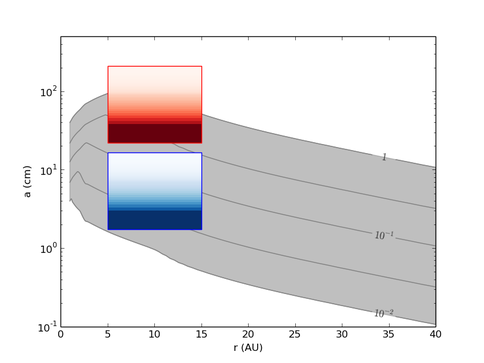2014 Annual Science Report
 NASA Goddard Space Flight Center
Reporting | SEP 2013 – DEC 2014
NASA Goddard Space Flight Center
Reporting | SEP 2013 – DEC 2014
Comets as Keys to Solar System Formation
Project Summary
Comets are both a key indicator of the processes that formed the early Solar System and potentially a source of volatiles and organics needed to make habitable planets. In this work we investigate how modern theories of planet and planetesimal formation may lead to predicted signatures in comets and, when compared with real comets, to tests of those theories.
Project Progress
We found that the large particles in the coma of Hartley 2 are consistent with the size ranges expected by theory (Figure 1). Therefore while we cannot conclusively state that these indeed are primordial pebbles, it is at least an intriguing possibility that they indicate the initial sizes. Additionally, theory predicts a decrease in pebble size decrease with heliocentric distance. If so, their presence and size in other comets may indicate the heliocentric distance of origin in the protoplanetary disk. The ROSETTA investigation of 67P/Churyumov-Gerasimenko may provide a second test of pebble presence and size. Some comets also show signs of formation at colder temperatures (for example, via CO and CO2 enrichments), possibly indicative of their formation farther out in the Solar Nebula where smaller pebbles are expected. Observational tests of this relation will be considered in future years.
-
PROJECT INVESTIGATORS:
-
PROJECT MEMBERS:
Harold Levison
Project Investigator
Katherine Kretke
Collaborator
-
RELATED OBJECTIVES:
Objective 1.1
Formation and evolution of habitable planets.
Objective 2.2
Outer Solar System exploration
